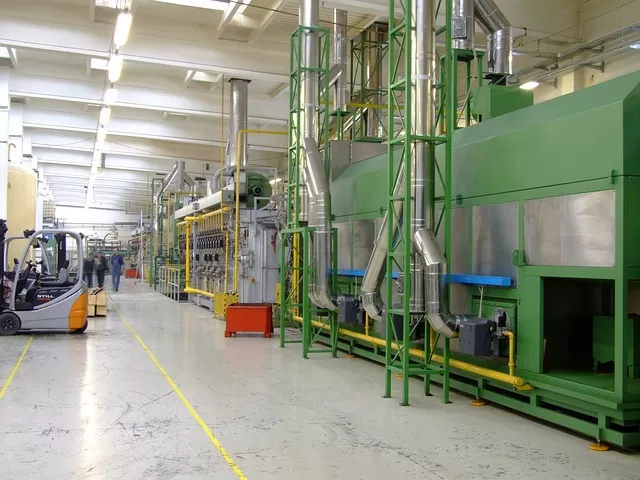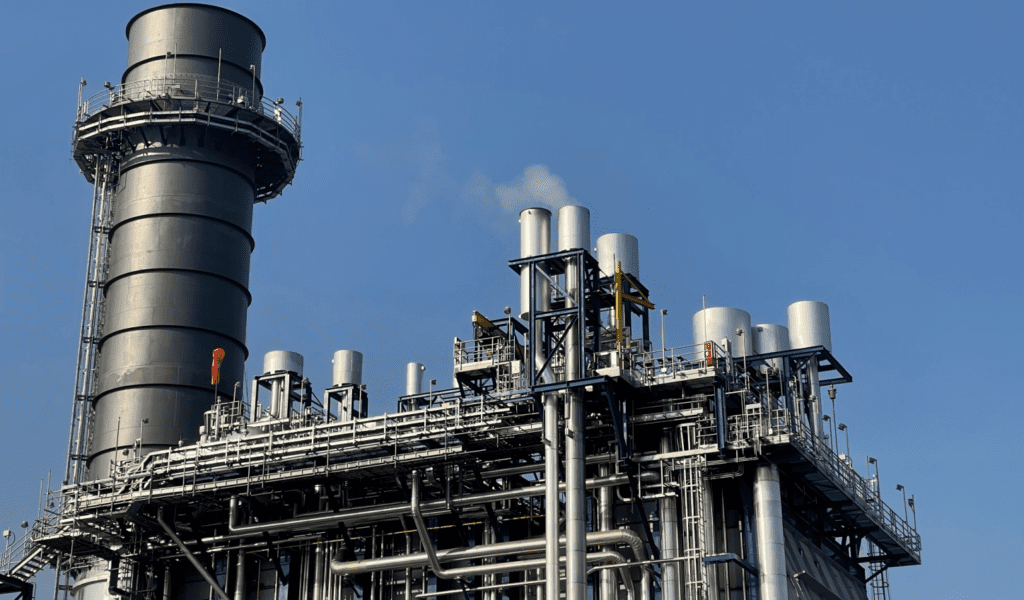Get In Control Of Your Assets Using BADA, Taproot & Software.
Getting in control of your Assets allows you to maximise asset reliability, availability, quality and this will lead to optimal costs, productivity and outputs.
There are many ways for getting in control of your assets and one of the most recognised ways is via effective maintenance.
8 common ways of identifying that a maintenance department are in control of your assets are:
1. Reduced breakdowns and emergency response maintenance.
2. Your assets are lasting longer and are being replaced as planned.
3. Constant efficient and effective resource usage.
4. An industry-leading safety performance year after year.
5. Sustained high levels of finished product quality.
6. Sustained optimal spare parts inventory and minimal urgent orders.
8. Constantly complying with all internal targets and safety regulations.
A maintenance department that is ‘in control’ is not just fixing machines; they are managing optimal maintenance strategies that have been developed for the entire operation.
Being ‘in control’ involves foresight, planning, and a deep understanding of the entire operation’s needs. There are two important actions that underpin being able to do this and they are:
1. Identifying any signs of defects as quickly as possible.
2. Using a comprehensive investigation technique to examine defects and then ensuring that a proactive maintenance strategy adjustment results.
A good way of doing this is to combine Bad Actor Defect Analysis (BADA) with Taproot Investigation techniques as follows:
1. Identify Critical Issues: BADA helps you pinpoint the most problematic equipment and processes, allowing you to focus your efforts where they’re most needed.
2. Uncover Root Causes: Taproot investigations dig deep into why these issues occur, revealing the fundamental problems that have been holding your maintenance efforts back.
3. Develop Targeted Solutions: Armed with this knowledge, you can create precise, effective maintenance strategies that address the real issues, not just the symptoms.
4. Predict and Prevent: By understanding your “bad actors” and their root causes, you can shift from reactive to proactive maintenance, preventing issues before they occur.
5. Optimized Maintenance Resources: This approach ensures your maintenance parts, people and equipment are directed where they’ll have the greatest impact, improving efficiency and reducing waste.
6. Continuous Improvement: The cyclical nature of this method means you’re constantly refining and improving your maintenance strategies, staying ahead of potential problems.
7. Data-Driven Decisions: By basing your maintenance strategy on thorough analysis and investigation, you’re making informed decisions backed by solid evidence.
8. Reduce Downtime and Costs: With better-targeted maintenance, you can significantly reduce equipment failures, unplanned downtime, and associated costs.
By implementing this BADA-Taproot approach, you’re not just maintaining your equipment; you’re getting in control of your entire maintenance process, which in turn is getting you in control of your assets.
What is Bad Actor Defect Analysis (BADA)
Bad Actor Defect Analysis (BADA) is a systematic approach employed to pinpoint and analyze these persistent issues.
The primary objective of BADA is to identify the root causes of recurring defects and implement effective corrective actions to mitigate their impact.
By focusing on these high-impact problems, organizations can achieve substantial improvements in their maintenance processes and equipment performance.
The BADA process I am promoting involves several key steps:
1. Data collection: Gathering comprehensive information on equipment failures, maintenance history, and operational impacts.
2. Statistical analysis: Utilizing techniques such as Pareto analysis to identify the most frequent and impactful issues.
3. Taproot Analysis: Investigating the underlying causes of recurring problems.
4. Failure mode and effects analysis (FMEA): Assessing potential failure modes and their consequences to prioritize corrective actions.
5. Solution development and implementation: Creating and executing plans to address the identified root causes.
6. Monitoring and refinement: Continuously tracking the effectiveness of implemented solutions and making adjustments as needed.
BADA often requires a cross-functional approach, involving collaboration between maintenance, operations, and engineering teams to effectively address complex issues. This collaborative effort ensures a comprehensive understanding of the problems and leads to more robust solutions.
As part of a continuous improvement cycle, BADA helps organizations progressively enhance their maintenance practices and equipment reliability.
Bad Actor Defect Analysis when combined with Taproot is a powerful tool in the maintenance teams arsenal, enabling targeted improvements that can have a substantial impact on an organization’s bottom line and operational performance.
What is the Taproot Investigation Technique?
The Taproot Investigation Technique stands as a formidable tool in the realm of root cause analysis, offering a systematic and disciplined approach to unearthing the underlying causes of equipment failures and incidents.
Unlike traditional methods that often focus on symptomatic fixes; Taproot delves deeper, aiming to identify the fundamental issues that precipitate recurring problems.
This not only enhances the reliability and efficiency of maintenance strategies but also fosters a culture of continuous improvement.
At the core of Taproot is its structured methodology, which facilitates a comprehensive examination of incidents. The process typically involves seven steps:
1. Planning the investigation.
2. Determining the sequence of events.
3. Identifying causal factors.
4. Analyzing each causal factor’s root causes.
5. Determining generic causes.
6. Developing and evaluating corrective actions.
7. Reporting and implementing solutions.
The process begins with meticulous data collection, where investigators gather detailed information about the failure, including timelines, environmental conditions, and operational procedures.
This is followed by a thorough analysis phase, where the data is scrutinized to identify any anomalies or deviations from standard practices.
Using a series of diagnostic tools and techniques, including the Taproot Root Cause Tree®, investigators can pinpoint exact root causes, distinguishing them from mere symptoms.
One of the critical strengths of Taproot lies in its emphasis on human factors and organizational influences.
By considering these dimensions, the technique ensures that all potential contributing factors are evaluated, leading to more robust and sustainable solutions. For instance, if an equipment failure is traced back to inadequate training, Taproot not only highlights this issue but also recommends targeted interventions to prevent future occurrences.
Taproot also employs a set of predefined root cause categories, including human performance, equipment/design issues, and management systems.
This categorization helps ensure a comprehensive analysis and facilitates the development of effective corrective actions.
Real-world applications of Taproot have demonstrated its efficacy across various industries. In the oil and gas sector, for example, Taproot has been instrumental in reducing downtime and enhancing safety by addressing the root causes of equipment malfunctions.
Similarly, in manufacturing, Taproot investigations have led to significant improvements in process reliability and product quality by tackling the foundational issues that cause defects and inefficiencies.
Overall, the Taproot Investigation Technique empowers organizations to move beyond reactive maintenance strategies, fostering a proactive approach that safeguards against recurring failures.
By systematically identifying and addressing root causes, Taproot not only mitigates risks but also drives operational excellence and long-term sustainability.
Its structured approach, combined with its focus on human factors and organizational systems, makes it a powerful tool for organizations committed to continuous improvement and reliability enhancement.
Implementing the Combined BADA-Taproot Approach.
The integration of Bad Actor Defect Analysis (BADA) with the Taproot Investigation Technique offers a powerful methodology for enhancing maintenance strategies and operational reliability.
My below guide outlines the essential steps for successfully implementing this combined approach in an industrial setting.
Initial Assessment and Preparation:
1. Conduct a comprehensive review of current maintenance operations.
2. Identify key performance indicators (KPIs) and set clear objectives.
3. Engage stakeholders from maintenance, operations, and management.
4. Assess existing data collection systems and identify any gaps.
5. Provide training on BADA and Taproot methodologies to relevant personnel.
Data Collection and Management:
1. Implement robust data collection systems, including sensors and automated logging.
2. Ensure data accuracy, consistency, and accessibility.
3. Collect comprehensive equipment performance data, maintenance history, and operational conditions.
4. Establish a centralized database for easy retrieval and analysis.
Bad Actor Identification:
1. Utilize Pareto analysis to identify the most frequent and impactful issues
2. Apply statistical tools to detect patterns and trends in equipment failures
3. Categorize bad actors based on frequency, impact, and cost
4. Prioritize bad actors for further analysis
Taproot Investigation.
For each prioritized bad actor, initiate a Taproot investigation.
Follow the seven-step Taproot process:
a) Plan the investigation.
b) Determine the sequence of events.
c) Identify causal factors.
d) Analyze root causes using the Taproot Root Cause Tree®.
e) Determine generic causes.
f) Develop and evaluate corrective actions.
g) Report findings and recommendations.
Failure Mode, Effects, and Criticality Analysis (FMECA):
1. Conduct FMECA for critical equipment identified through BADA.
2. Identify potential failure modes, their effects, and criticality.
3. Use FMECA results to complement Taproot findings and inform preventive strategies.
Development of Action Plans:
1. Create SMART (Specific, Measurable, Achievable, Relevant, Time-bound) action plans.
2. Address both immediate fixes and long-term preventive measures.
3. Align action plans with overall maintenance strategy and organizational goals.
4. Assign responsibilities and set deadlines for each action item.
Implementation and Monitoring.
1. Execute action plans systematically.
2. Establish a monitoring system to track the effectiveness of implemented changes.
3. Regularly review KPIs to assess improvement in equipment reliability and maintenance efficiency.
4. Adjust strategies based on ongoing performance data.
Continuous Improvement and Knowledge Management.
1. Establish a feedback loop to continuously refine the BADA-Taproot process.
2. Create a knowledge base of lessons learned and best practices.
3. Regularly update maintenance procedures based on new insights.
4. Conduct periodic reviews of the entire BADA-Taproot process for potential improvements.
Stakeholder Engagement and Communication.
1. Maintain regular communication with all stakeholders throughout the process.
2. Provide progress updates and share success stories.
3. Foster a culture of reliability and continuous improvement across the organization.
4. Encourage cross-functional collaboration between maintenance, operations, and engineering teams.
Documentation and Reporting.
1. Maintain comprehensive documentation of all BADA-Taproot activities.
2. Develop standardized reporting templates for consistency.
3. Ensure easy accessibility of reports and action plans to relevant personnel.
4. Use documentation for auditing, training, and knowledge transfer purposes.
By systematically implementing this combined BADA-Taproot approach, maintenance departments can significantly enhance their ability to identify, analyze, and address recurring equipment issues.
This methodology not only improves operational reliability and efficiency but also fosters a proactive maintenance culture focused on continuous improvement and long-term sustainability.
10 Benefits of the Integrated BADA-Taproot Method
Implementing the integrated BADA-Taproot methodology offers maintenance departments a powerful toolkit for enhancing operational reliability, safety, and overall performance.
As this approach combines the strengths of Bad Actor Defect Analysis (BADA) and the Taproot Investigation Technique, it should be able to deliver substantial and measurable benefits:
1. Dramatic Reduction in Unplanned Downtime:
a. Proactive identification of potential failures before they occur. Targeted interventions based on data-driven insights.
b. Shift from reactive to predictive maintenance strategies.
c. Quantifiable impact: Set a target of up to 50% reduction in unplanned downtime in some industries.
2. Significant Cost Savings:
a. Decrease in emergency repair expenses. Extended asset lifespan through optimized maintenance.
b. Reduced inventory costs due to better spare parts management.
c. Potential savings: Set a target of 10-30% reduction in overall maintenance costs.
3. Enhanced Safety Performance:
a. Systematic identification and mitigation of safety risks. Reduction in incidents related to equipment failures.
b. Creation of a proactive safety culture.
c. Measurable outcome: Set a target of up to 20% improvement in overall safety performance.
4. Improved Asset Reliability and Performance:
a. Optimized maintenance strategies tailored to specific asset needs. Increased Overall Equipment Effectiveness (OEE).
b. Better alignment of maintenance activities with operational goals.
c. Expected results: Set a target of 5-15% increase in asset reliability.
5. Data-Driven Decision Making:
a. Utilization of advanced analytics for maintenance planning.
b. Clear prioritization of maintenance activities based on criticality.
c. Continuous improvement driven by performance data.
d. Benefit: Target up to 30% improvement in maintenance decision accuracy.
6. Enhanced Root Cause Analysis:
a. Deeper understanding of failure mechanisms.
b. Prevention of recurring issues through targeted solutions.
c. Improved knowledge sharing across the organization.
d. Impact: Target up to 40% reduction in repeat failures.
7. Streamlined Maintenance Workflows:
a. Optimized resource allocation based on BADA prioritization.
b. Reduction in unnecessary preventive maintenance tasks.
c. Improved coordination between maintenance and operations teams.
d. Result: Target up 15-25% increase in maintenance workforce productivity.
8. Cultural Transformation:
a. Shift from reactive to proactive maintenance mindset.
b. Increased engagement and ownership among maintenance staff.
c. Alignment of maintenance strategy with overall business objectives.
d. Outcome: You should be able to expect improved employee satisfaction and retention rates.
9. Regulatory Compliance and Risk Management:
a. Better documentation and traceability of maintenance activities.
b. Improved ability to meet and exceed regulatory requirements.
c. Reduced risk of catastrophic failures and associated liabilities.
d. Benefit: There should be fair to expect enhanced stakeholder confidence and potential insurance premium reductions.
10. Long-Term Sustainability:
a. Improved energy efficiency through optimized equipment performance.
b. Reduced waste generation due to fewer breakdowns and repairs.
c. Extended asset lifecycles, reducing the need for premature replacements.
d. Impact: You would be starting to see evidence that you are achieving the organizational sustainability goals and you have been able to reduce your environmental footprint.
By adopting the integrated BADA-Taproot approach, maintenance departments can transform their operations from a cost center to a value-adding function.
This methodology not only addresses immediate maintenance challenges but also lays the foundation for long-term operational excellence and competitive advantage.
The synergy between BADA’s focus on recurring issues and Taproot’s thorough root cause analysis creates a comprehensive system that surpasses traditional maintenance strategies.
While conventional methods often struggle with recurring problems and reactive responses, the BADA-Taproot approach offers a proactive, data-driven solution that consistently delivers superior results across multiple performance indicators.
Maintenance departments implementing this integrated approach can expect to see tangible improvements in their key performance indicators, leading to increased reliability, reduced costs, and enhanced overall organizational performance.
Leveraging Software Solutions for the BADA-Taproot Approach.
While the BADA-Taproot methodology can be implemented manually, several existing software solutions can be adapted to support and enhance this combined approach.
Three notable products that show promise in this area are:
1. Nexus Global’s Strategy Optimizer.
2. ARMS Reliability’s OnePM.
3. OnPlan Advantage.
With some tailoring and this could be a combination of customization and personalisation, these tools could significantly streamline the BADA-Taproot process:
Nexus Global’s Strategy Optimizer:
1. Strengths: Intuitive interface, lifecycle management focus
2. Potential adaptations:
a. Integrate BADA functionality to identify and prioritize bad actors.
b. Incorporate Taproot’s root cause analysis structure.
c. Expand reporting capabilities to include BADA-Taproot specific metrics.
ARMS Reliability’s OnePM:
1. Strengths: SAP integration, strategy analysis and recommendation capabilities.
2. Potential adaptations:
a. Add BADA-specific modules for defect identification and analysis
b. Enhance root cause analysis features to align with Taproot methodology
c. Utilize existing strategy optimization features to support BADA-Taproot action plans
OnPlan Advantage:
1. Strengths: User-friendly interface, real-time strategy building, mobile integration, SAP, Pronto, Oracle JDE and Microsoft Dynamics integration.
2. Potential adaptations:
a. Develop a BADA module for identifying and tracking bad actors.
b. Integrate Taproot investigation steps into the workflow.
c. Expand the task board feature to include BADA-Taproot specific tasks and processes
These 3 software solutions could be enhanced to support key aspects of the BADA-Taproot approach:
1. Data Collection and Management: Utilize existing data management capabilities to gather and organize information needed for BADA and Taproot analyses.
2. Bad Actor Identification: Implement algorithms to identify recurring issues and prioritize them based on frequency and impact.
3. Taproot Investigation Support: Integrate guided workflows that follow the Taproot methodology, ensuring thorough root cause analysis.
4. Action Plan Development: Leverage existing strategy optimization features to create and manage BADA-Taproot action plans.
5. Monitoring and Continuous Improvement: Use built-in reporting and analytics tools to track the effectiveness of implemented strategies and identify areas for ongoing improvement.
By adapting these software solutions, maintenance departments can more efficiently implement the BADA-Taproot approach, leading to more effective identification of bad actors, thorough root cause analysis, and data-driven strategy development.
The integration of such tools can significantly enhance the speed, accuracy, and consistency of the BADA-Taproot process, ultimately improving overall maintenance effectiveness and equipment reliability.
It’s important to note that while these software solutions have been around for a long time, they have formidable strengths in certain areas offer great potential, I think they should be viewed as tools to support/complement the BADA-Taproot methodology rather than replacements for skilled analysis and decision-making by maintenance professionals.
The most effective implementation will combine the power of these software tools with the expertise and judgment of experienced maintenance teams.
Conclusion:
The integration of Bad Actor Defect Analysis (BADA) and Taproot Investigation techniques, supported by quality software solutions, presents a powerful approach for maintenance departments to gain control over their assets and elevate their operational performance.
This combined methodology offers a systematic way to identify, analyze, and address recurring issues that impact asset reliability and performance.
By focusing on ‘bad actors’ and conducting thorough root cause analyses, maintenance teams can shift from reactive to proactive strategies, leading to significant improvements across multiple fronts:
1) Reduced unplanned downtime.
2) Substantial cost savings.
3) Enhanced safety performance.
4) Improved asset reliability and longevity.
5) Data-driven decision making.
6) Streamlined maintenance workflows.
7) Cultural transformation towards proactive maintenance.
The implementation of this approach, while requiring initial investment in time, money, training and resources, should be able to deliever substantial long-term benefits.
These include not only operational improvements but also contributions to organizational sustainability goals and reduced environmental impact.
Moreover, the availability of quality software solutions like Nexus Global’s Strategy Optimizer, ARMS Reliability’s OnePM, and OnPlan Advantage can significantly streamline the BADA-Taproot process.
These tools, when adapted to support this integrated approach, can enhance data management, analysis, and strategy implementation, making the entire process more efficient and effective.
However, it’s crucial to remember that while these software solutions are powerful aids, they should complement, not replace, the expertise of maintenance professionals.
The most effective implementation of the BADA-Taproot approach will always be a combination of advanced tools and skilled/trained & experienced human judgment.
By adopting this integrated approach, maintenance departments can transform from cost centers to value-adding functions within their organizations.
They should expect to see tangible improvements in key performance indicators, leading to increased reliability, reduced costs, and enhanced overall organizational performance.
Getting in control of your assets is not just about fixing machines, it’s about strategic asset management that drives operational excellence.
The BADA-Taproot approach, supported by quality software solutions, provides a comprehensive framework to achieve this goal.
It empowers maintenance teams to not only respond to current challenges but also to anticipate and prevent future issues, setting the stage for long-term success and competitive advantage.
As you embark on this journey of implementation, remember that the path to excellence is continuous.
Regular review, refinement, and adaptation of your strategies will ensure that your maintenance practices evolve with your organization’s needs and technological advancements.
By doing so, you’ll not only get in control of your assets but stay in control, driving your organization towards sustained operational excellence.








